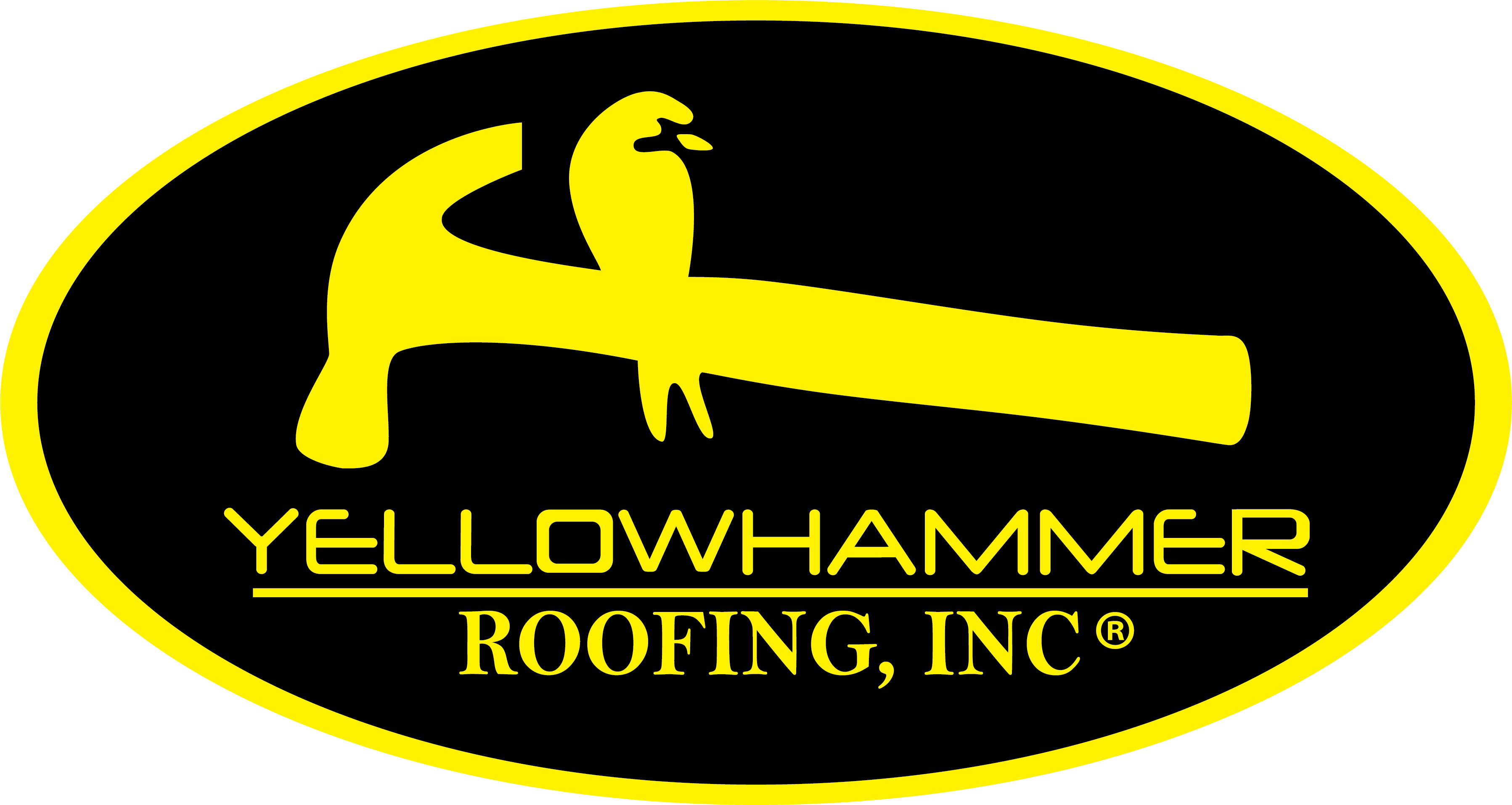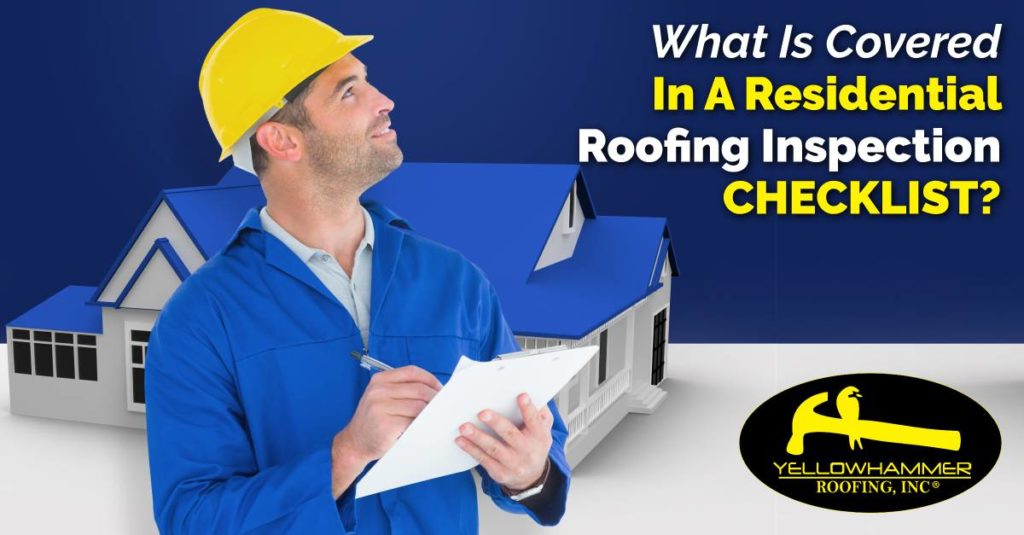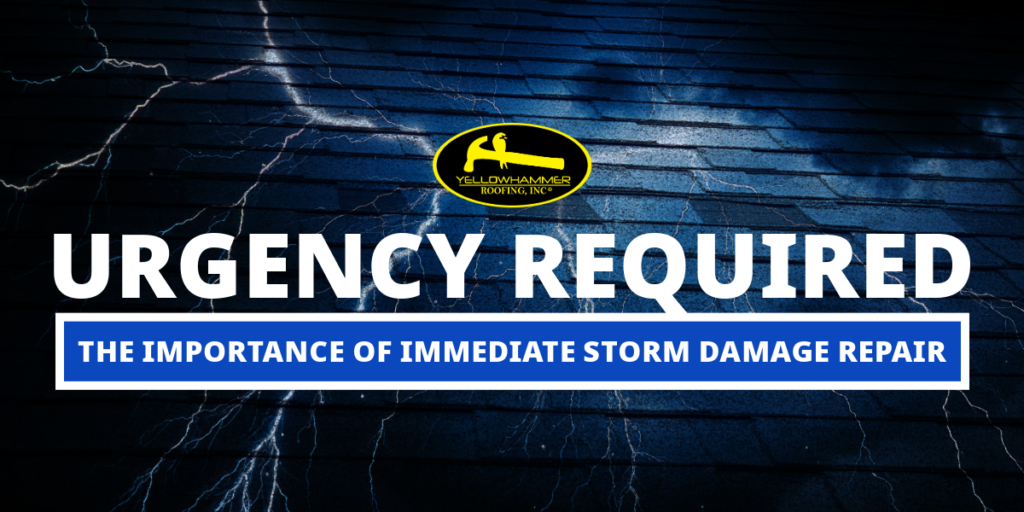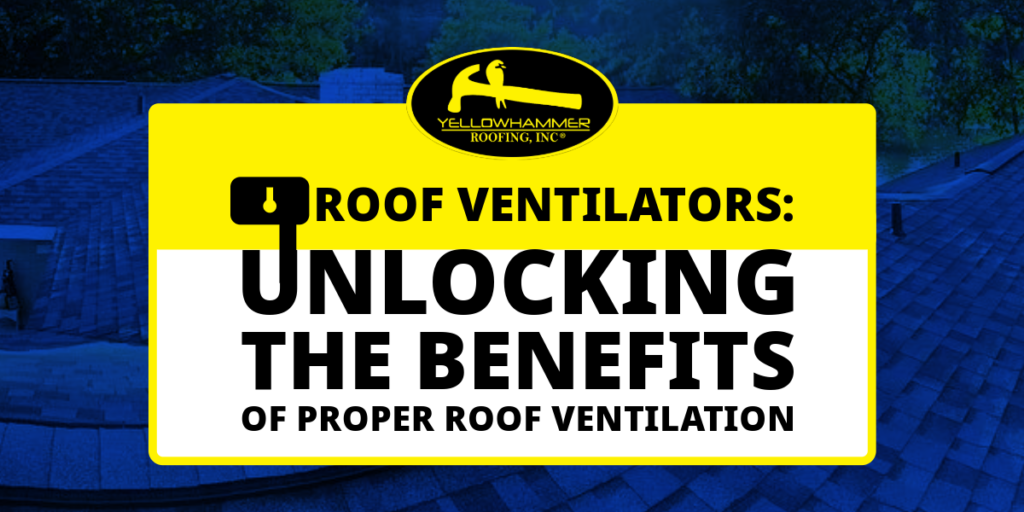Some folks are born listmakers. Others, mainly homeowners, learn the value of lists and checklists because their homes need a little TLC. Having a residential roofing inspection checklist is a good safeguard against roofing headaches for every homeowner.
You Do
In assessing, inspecting, and maintaining your roof, you have three relatively safe areas to work:
- Your yard
- Your attic
- Your gutters
All other parts of roof work should be left in the skilled hands of trained roofers. However, from your yard, you can inspect substantial portions of your Alabama home’s roof:
- Ridge vents — Shingles cap the open-air ridges, allowing circulating air to remove moisture from your attic space
- Soffit vents — Your home’s eaves have vents to let air flow into your attic
- Gable vents — Some homes use gable vents to circulate much-needed fresh air into their attic space
- Metal panels — If you have a metal roof, check for buckled, dented, or “oilcanned” panels (panels with hills and valleys from thermal expansion); look for chipped finishes, corrosion, or missing pieces
- Tile — Tile roofs are durable, but also fragile; look for cracked or dislodged tiles, algae and moss growth, or signs of blunt impacts
- Field shingles — The vast expanse of your roof may have missing, loose, damaged, curled, crazed, or buckled shingles easily visible from the ground
- Flashing — The metal which spans joints, as between chimney and shingles, or in valleys; this metal should be shiny and clean, so look out for corrosion, pitting, or (far worse) missing or loose flashing
Inside your attic, you can safely inspect the underside of your roof. This is the sheathing, the sheets of plywood or Oriented Strand Board (OSB). It supports the roof materials. Look for:
- Signs of water infiltration, including discoloration, mold, mildew, rot, or dripping water
- Visible light coming through from above, indicating the sheathing is too far apart (a small gap for thermal expansion is necessary; a wide gap is trouble)
- Signs of insect or pest damage, such as gnawed wood, holes, or nests
Check rafters (the wooden supporting members holding up the roof) and joists (horizontal wood members forming the attic floor and living space ceiling) for signs of rot, water damage, or cracks.
Check attic insulation. Is it missing, wet, damp, or dislodged? Is it blocking airflow from the soffit vents?
Check your home’s gutter system. If you feel comfortable on an extension ladder, gutters for the first floor and, in some cases, higher floors are relatively safe for you to inspect. Check your gutters for:
- Not full of granules from a shingle roof
- Are free of mechanical fasteners dislodged from a metal roof
- Tightly adhered to your home’s fascia boards
- Free of rust, dents, sags, or corrosion
- Not harboring insect nests or serving as rodent entry paths to your attic
Gutters are the last stage of your home’s entire roof system. Ensure they are clear and allow water to run freely.
You Don’t Do
The one thing no homeowner should attempt, whether to inspect or maintain an Alabama home’s roof, is to walk on the roof. Roofs by design are sloped; slips and falls are always a danger.
Roofs with moisture, moss, or algae can be incredibly slippery. Homeowners should avoid climbing around their roofs, leaving this work to skilled roofers with proper safety equipment.
No residential roofing inspection checklist should include an item for the homeowner to walk on a roof.
What Does Roof Maintenance Mean?
A conscientious, friendly roofer will gladly perform annual maintenance on your Alabama home’s roof. A good, local roofer will:
- Remove debris from your roof and check gutters for additional debris
- Inspect every inch of your roof exterior, using proper safety equipment
- Perform an extensive inspection of your attic, including the narrow space where soffit vents allow fresh air into the attic
- Note the condition of every aspect of your roof, roughly dividing each part into one of three levels of care: Good (no action needed); Fair (monitor potential trouble spots); or Bad (requires immediate repair)
- Document all parts of your roof using notes, photographs, and video, focusing especially on areas categorized as “Bad”
- Discuss strategies for roof repairs or full roof replacement
Act Fast
A dependable, helpful roofer will not pull any punches in reviewing a residential roofing inspection checklist with you. No residential roof can heal itself. Roof problems in the “Bad” category require fast action by trained professional roofers.
Often, many minor repairs can be performed during the annual inspection visit itself. Some problems may be large enough to require a separate visit. Schedule this repair and maintenance work to be done as soon as possible.
Contact us at Yellowhammer Roofing today to schedule a roofing inspection soon. We will use our own residential roofing inspection checklist to safely and thoroughly inspect your Alabama home’s roof.






